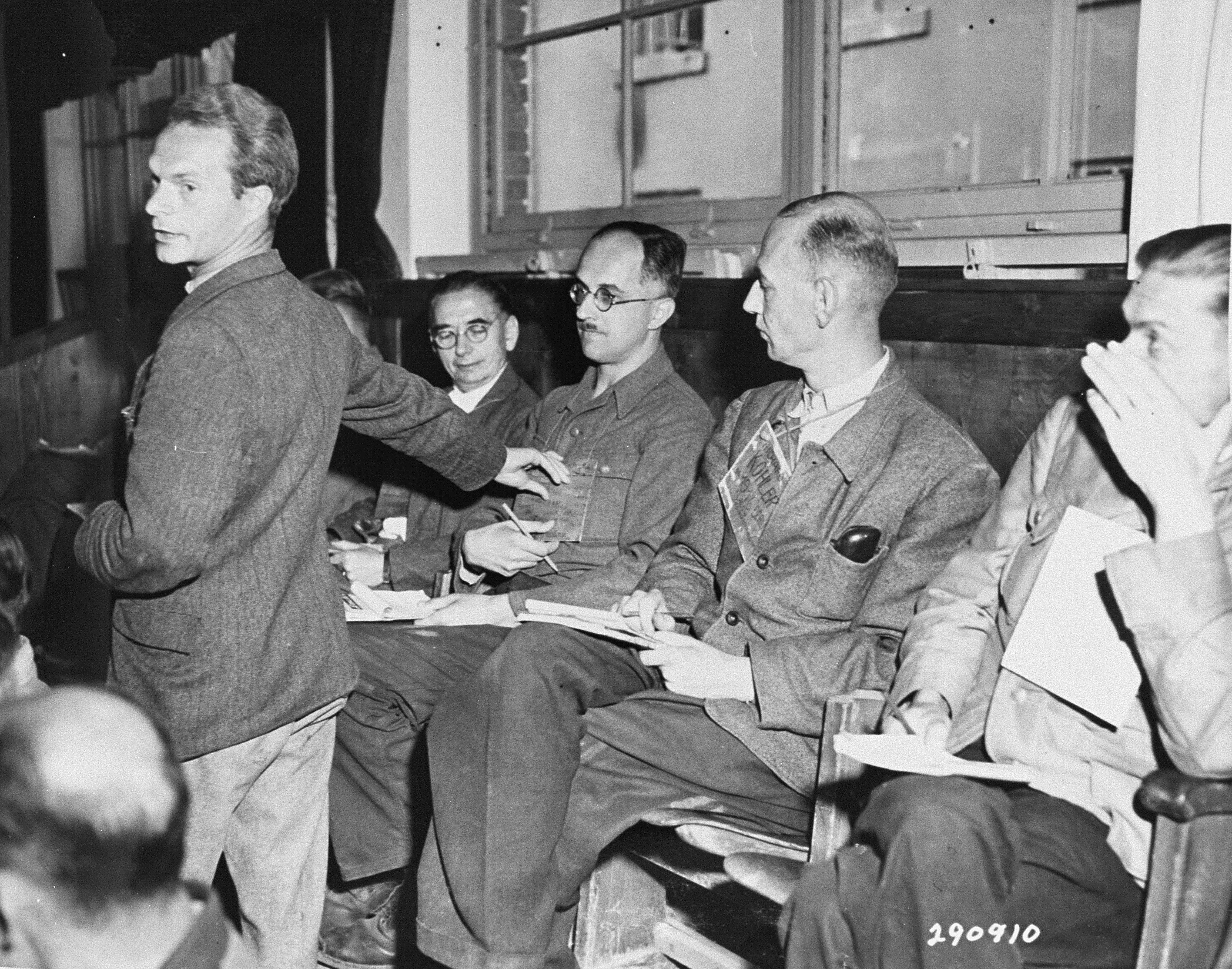|
Boelcke's Barracks
Boelcke-Kaserne concentration camp (; also Nordhausen) was a subcamp of the Mittelbau-Dora concentration camp complex where prisoners were left to die after they became unable to work. It was located inside a former Luftwaffe barracks complex in Nordhausen, Thuringia, Germany, adjacent to several pre-existing forced labor camps. During its three-month existence, about 6,000 prisoners passed through the camp and almost 3,000 died there under "indescribable" conditions. More than a thousand prisoners were killed during the bombing of Nordhausen by the Royal Air Force on 3–4 April 1945. Their corpses were found by the US Army units that liberated the camp on 11 April. Photographs and newsreel footage of the camp were reported internationally and made Nordhausen notorious in many parts of the world. History In 1936, a Luftwaffe barracks complex, named after the World War I flying ace Oswald Boelcke, was constructed in the suburbs of the city of Nordhausen, Thuringia. From 1942, ... [...More Info...] [...Related Items...] OR: [Wikipedia] [Google] [Baidu] |
Nordhausen, Thuringia
Nordhausen () is a city in Thuringia, Germany. It is the capital of the Nordhausen district and the urban centre of northern Thuringia and the southern Harz region; its population is 42,000. Nordhausen is located approximately north of Erfurt, west of Halle, south of Braunschweig and east of Göttingen. Nordhausen was first mentioned in records in the year 927 and became one of the most important cities in central Germany during the later Middle Ages. The city is situated on the Zorge river, a tributary of the Helme within the fertile region of Goldene Aue ''(golden floodplain)'' at the southern edge of the Harz mountains. In the early 13th century, it became a free imperial city, so that it was an independent and republican self-ruled member of the Holy Roman Empire. Due to its long-distance trade, Nordhausen was prosperous and influential, with a population of 8,000 around 1500. It was the third-largest city in Thuringia after Erfurt, today's capital, and Mühlhausen, the ... [...More Info...] [...Related Items...] OR: [Wikipedia] [Google] [Baidu] |

